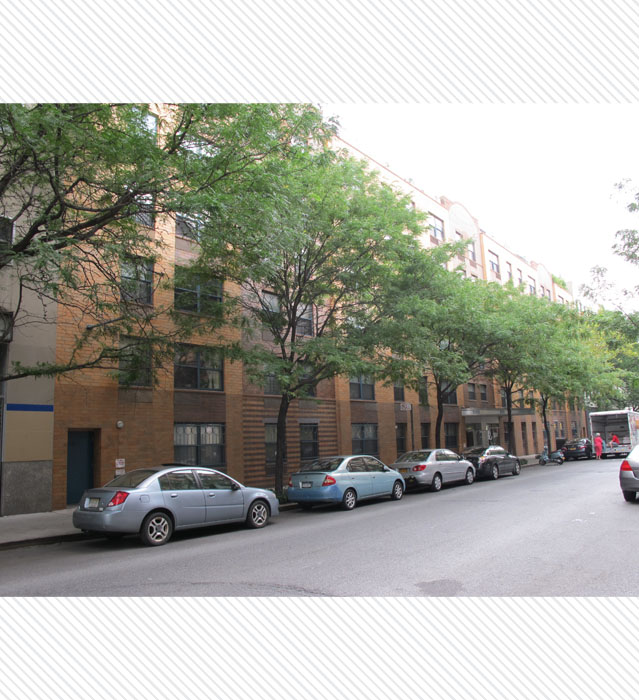Description & Building Alterations
Designed in 1995, The Hudson East is an apartment building on the site of the former Fillmore East Theater, which had its auditorium at this location. The Commodore Theater, a Yiddish theater, was constructed at this site in 1925-26. It shared the same architect – Harrison Wiseman – and opening date as the Yiddish Art Theater at 189 Second Avenue. While its auditorium has been demolished and replaced, much of its original facade remains. In the first year of business, the Commodore became the Loew’s Commodore movie theater. In 1963, it transitioned into a theatrical venue called the Village Theatre. The Who, Richie Havens, Blues Project, the Yardbirds, Vanilla Fudge, and Cream, Moby Grape, Procol Harum, and the Grateful Dead performed at this venue.
The building then became the Fillmore East, created by San Francisco-based rock impresario Bill Graham who also ran the Fillmore West in his hometown, in 1968 until 1971. Lenny Bruce, Donovan, John Coltrane and Ornette Coleman, Chuck Berry, Timothy Leary, Rudi Stern, The Doors, The Who, Led Zeppelin, Mothers of Invention, the Fugs, the Allman Brothers Band, and the Left Banke all performed here. Jimi Hendrix, Sly and the Family Stone, the Chambers Brothers, and Miles Davis, among many others, both performed and recorded albums here. Graham also allowed the venue to be used for numerous fundraisers for a variety of community and political causes, including a high-profile and controversial fundraiser for the Black Panthers in 1968 shortly after the venue opened to raise funds for bail for Panther leader Eldridge Cleaver, shortly after he announced his candidacy for President on the Peace and Freedom Party ticket (read NY Times coverage here).
In the fall of 1980, this building was converted into what was to become the City’s best and most celebrated gay disco, The Saint, established by Bruce Mailman. The Saint, with a planetarium dome and impressive lighting effects, quickly became famous world-wide. Its doors were officially closed on May 2, 1988 following a non-stop 48-hour party. The building was used periodically for a couple of years for various live events, and then stood empty until the auditorium was demolished in 1995. Today, the narrow and highly decorative Adamesque facade remains. The lobby has been remodeled as the Emigrant Savings Bank.
More +Close -


Do you know this building? Please share your own stories or photos of this building here!